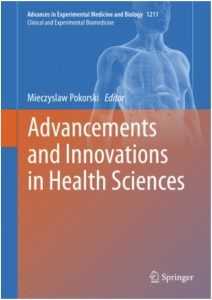Publications

Integrated Rehabilitation Approach with Manual and Mechanic-Acoustic Vibration Therapies for Urinary Incontinence
Authors: Giovanni Barassi 1, Rosa G Bellomo 2, Franco Frondaroli 3, Serena Frondaroli 4, Alessandro Santarelli 3, Piera A Di Felice 5, Marco Supplizi 5, Tommaso Palermo 5, Raoul Saggini 5
Affiliations:
- Department of Medical and Oral Sciences and Biotechnologies, “Gabriele D’Annunzio” University, Chieti, Italy
- Department of Biomolecular Sciences, “Carlo Bo” University, Urbino, Italy
- Maternal-Infant Department, Obstetrics and Gynecology Clinic, “SS. Annunziata” University Hospital, Chieti, Italy
- Gynecology Operation Unit, “Floraspe Renzetti” Hospital, Lanciano, Italy
- Department of Medical and Oral Sciences and Biotechnologies, “Gabriele D’Annunzio” University, Chieti, Italy
Journal: Advancement & Innovations in Health Sciences - Clinical and Experimental Biomedicine (2019) 7: page 41–50 (DOI: 10.1007/5584_2019_436)
-
Field & Applications:
- Medical
- Women's health
- Treatment evaluation
- Neuromuscular manual therapy
- Physiotherapy
This study aims to verify whether an integrated rehabilitation protocol comprising neuromuscular manual therapy and focused mechanical-acoustic vibrations can significantly reduce pelvic floor dysfunctions in women affected by stress, urge, or mixed urinary incontinence. Sixty-two women were treated with a combination of neuromuscular manual therapy and mechanical-acoustic vibrations at the level of superficial pelvic floor muscle groups. The results were analyzed before the beginning and after the end of the study protocol with the myometric measuring device MyotonPRO, the Pelvic Floor Disability Index (PFDI-20), and the Pelvic Floor Impact Questionnaire (PFIQ-7). Two patients withdrew from the study after the first visit. The 60 remaining patients showed significant improvements of myometric parameters, with the percentage variations ranging from +8.5% to +20.7% for the muscle logarithmic decrement, from −11.2 to −13.9% for muscle frequency, and from −4.8% to −12.3% for muscle stiffness. There has been a reduction of 56% in the perceived disability induced by urinary incontinence, measured with the PFDI-20, and 43% reduction in the impact of the problem on daily living, measured with the PFIQ-7. We conclude that a combination of neuromuscular manual therapy and mechanical-acoustic vibrations effectively reduces pelvic symptoms in patients affected by urinary incontinence, with minimal invasiveness.
Keywords: Neuromuscular manual therapy, Pelvic floor muscles, Physiotherapy, Rehabilitation, Urinary incontinence, Vibration therapy


